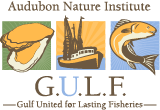Complexities of Sustainability
 “Sustainability” is a word we hear often, in all sorts of contexts, whether it’s the sustainability of business and finance, or of natural resources. At a basic level, sustainability means utilizing a resource in a manner in which it can be replenished. In fisheries and in the seafood industry, a great deal of work goes behind ensuring fish and shellfish populations are harvested sustainably, ideally in a manner that industry-members can also maintain profitable businesses.
“Sustainability” is a word we hear often, in all sorts of contexts, whether it’s the sustainability of business and finance, or of natural resources. At a basic level, sustainability means utilizing a resource in a manner in which it can be replenished. In fisheries and in the seafood industry, a great deal of work goes behind ensuring fish and shellfish populations are harvested sustainably, ideally in a manner that industry-members can also maintain profitable businesses.
The Science of Sustainable Seafood
Keeping track of finfish and shellfish populations is no easy task, yet it is vital to the health of coastal communities around the United States. In 2012, commercial and recreational fishing had a $199 billion sales impact and supported 1.7 million jobs. Much of that impact was right here in the Gulf of Mexico.
There is much more to monitoring the health of species than just counting animals. One must also take into account the ecosystem an animal lives in and relies on, food availability, environmental conditions, habitat quality, and other species that may share that habitat or ecosystem. Collaboration is vital in keeping track of a fishery’s health. State and federal management agencies, universities, and fishermen must all work together to provide as much information as possible on the fishery so that its status can be determined.
What does the Science Look Like?
1. Management Meetings (both state and federal)
2. Collaborative Groups
3. Tracking landings
4. Stock Assessments
5. Habitat Monitoring
6. Academic publications
7. Gear testing
8. Economic analysis
9. Dock visits by enforcement agents
This is far from an exhaustive list of the kinds of information collected to study and manage fisheries. Scientists and managers take these data into consideration when making decisions and setting regulations for a fishery. Management decisions may include setting catch quotas, determining the gear types that can be used, number of licenses that can be sold to fishermen, and areas open or closed to fishing.
Agencies and Councils Involved in Gulf Fisheries
Enforcement
Law enforcement officers across several agencies are responsible for enforcing the fishing laws set by NOAA and the Gulf States. These men and women are responsible for ensuring the safety of U.S. fishermen, preventing illegal activities, and protecting fish stocks and other marine species.












